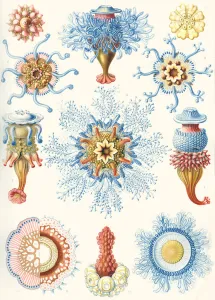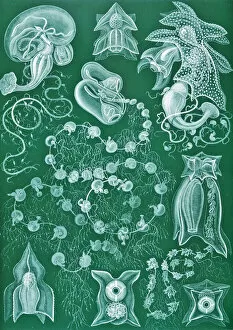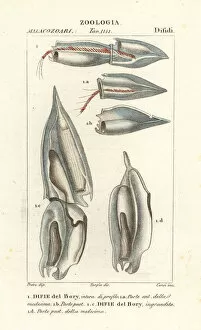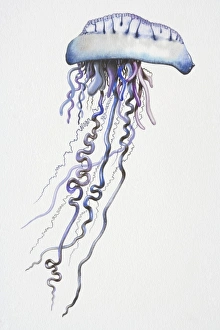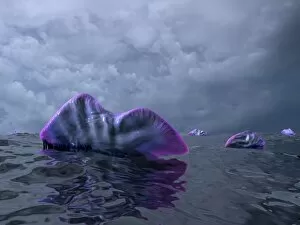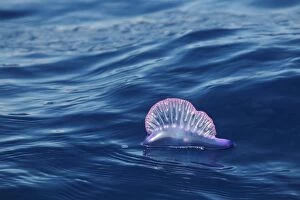Siphonophores Collection
Siphonophores, such as Diphyes dispar and Diphyes boryi, are fascinating creatures that belong to the group of Portuguese Man o War
All Professionally Made to Order for Quick Shipping
Siphonophores, such as Diphyes dispar and Diphyes boryi, are fascinating creatures that belong to the group of Portuguese Man o War. With their long, dangling purple-blue tentacles, they create a mesmerizing sight in the depths of the ocean. In Kunstformen der Natur from 1899, you can find stunning color lithographs showcasing these unique organisms. African pompano and ponyfish are also Siphonophorae that exhibit remarkable characteristics. However, it is the Portuguese Man o War that steals the show with its captivating presence. Swarming over the surface of Cambrian oceans or floating peacefully on the ocean surface in Azores during June, these creatures command attention wherever they go. The Portuguese Man o War's striking appearance often leads to encounters with humans when washed ashore on beaches like Tobago. Despite their beauty, caution must be exercised as their tentacles carry venomous stings capable of causing painful reactions. As we explore our vast oceans and marvel at its inhabitants like siphonophores and Portuguese Man o War, let us remember to appreciate their magnificence while respecting their natural habitats.


